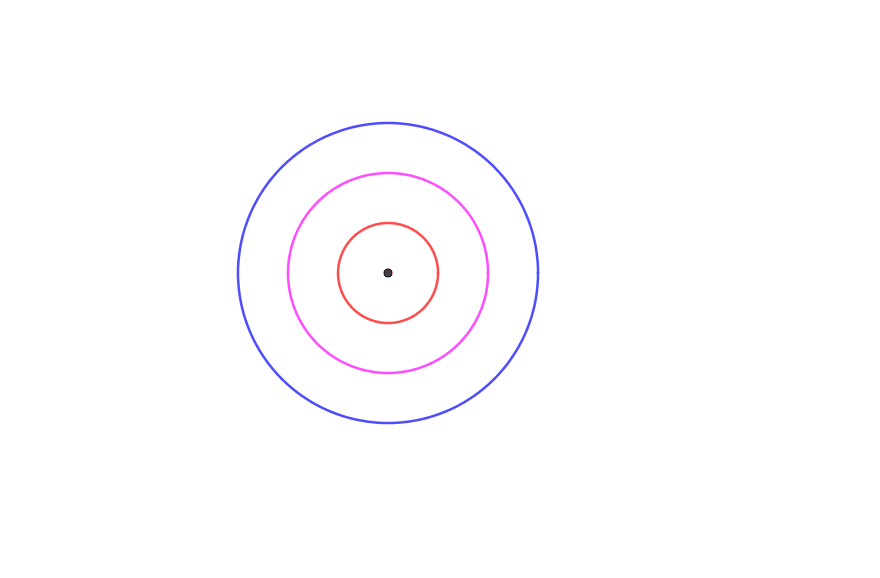How does the focus-directrix definition of a conic section apply to a circle?
Consider the following illustration of a triple-family of conics, each with a common focus and matching eccentricities, but with distinct directrices. (The animation oscillates between eccentricities $0$ and $2$.)

As each conic gets more circular, its directrix moves further away. Consequently, it's not unreasonable to say that, as a limiting case, a (non-degenerate) circle, which has eccentricity $0$, has its directrix "at infinity", which is consistent with the relation
$$\text{eccentricity} = \frac{\text{distance from point to focus}}{\text{distance from point to directrix}} \tag{$\star$}$$
Of course, this makes a directrix completely useless for uniquely determining a circle, since the three concentric circles shown have the same fixed focus and "the same" infinitely-distant directrix. (Another wrinkle: A circle's directrix is really "at infinity" in any direction; so, it's really an indeterminate element.)
Otherwise, you're correct that, for a given (not-at-infinity) line and a given (not-at-infinity) focus, relation $(\star)$ with eccentricity $0$ defines a point-circle (ie, a circle of radius $0$) at the focus/center. (Related wrinkle: For such a circle, any line not passing through the focus/center serves as a directrix.)
This is one of the ways conics sections force people to confront ---and embrace--- infinity. As above, the key to understanding is to consider any particular conic, not as an isolated curve, but as part of an appropriate family of curves.